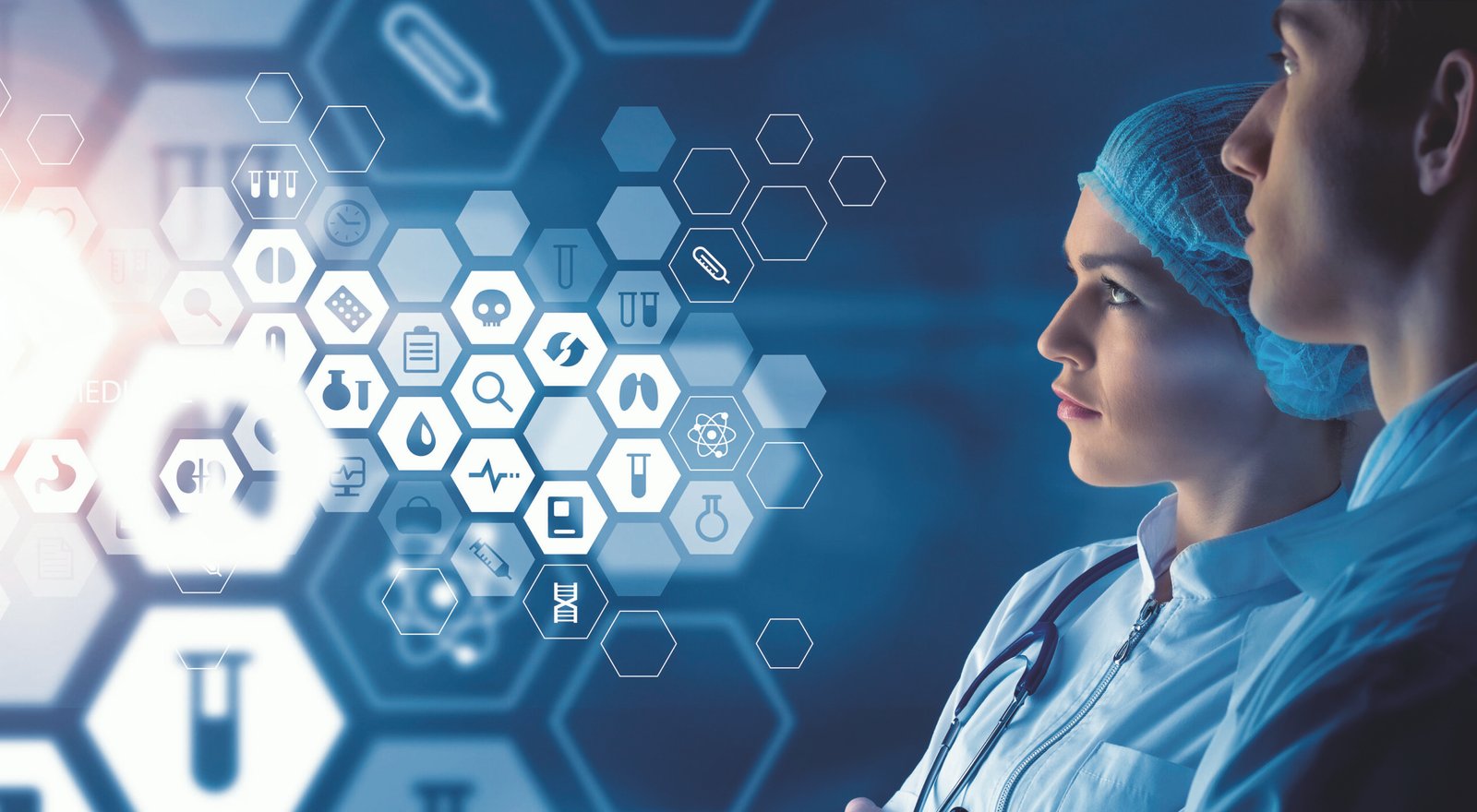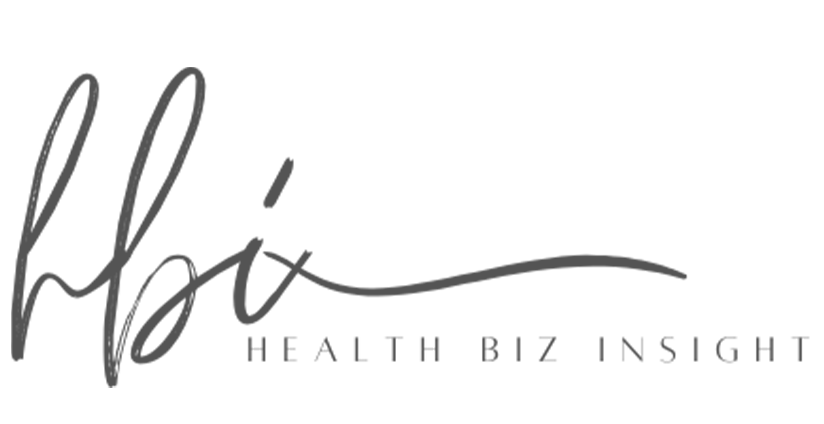
Technological advancements, overarching shifts in patient needs, and a rising demand for preemptive medical care are key factors that are transforming the healthcare industry. Healthcare is being delivered by cutting edge methods ranging from AI to personalized medicine. This article will explore and analyze the developments and shifts in the industry in a bid to comprehend how healthcare is being revolutionized with the future in mind.
Use of AI and ML in the Healthcare Sector
Both artificial intelligence and machine learning have revolutionized healthcare as we know it. Healthcare processes, diagnostics, and treatment plans have been optimized with the help of these two technologies. Consequently, modern day tools such as smart watches or phones with health applications, and more sophisticated telehealth options are now parts of everyday life.
Diagnostics and Imaging: When it comes to medical imaging, AI is the most valuable resource at any practitioner’s disposal. Under AI, imaging tests such as X Rays and CT scans can now be analyzed with much more ease and accuracy. The advent of AI in healthcare has ensured early stages of diseases like cancer can be diagnosed at superior accuracy in comparison to when human radiologists conduct the check real time. Not only AI imaging tools expedite diagnosis but human error in these scenarios diminishes significantly.
Predictive Analytics: Machine learning models help healthcare personnel in expecting outcomes like the number of hospital readmissions a patient is likely to have or the chances of them acquiring chronic health conditions. With the aid of vast quantities of patient data, these systems help relevant stakeholders implement changes in a timely manner and customize the patient care. Virtual assistants: The AI-powered chatbots and virtual assistants are becoming increasingly popular for providing the patients support around the clock. These tools can deal with medical inquiries, take care of appointment scheduling, as well as act as helpful reminders for patients needing medication dosages.
Remote Patient Monitoring and Telemedicine
The COVID-19 pandemic greatly facilitated the use of telemedicine, which is likely to remain in use. This allows patients to deepen the consultation with healthcare specialists while being in their castles and homes, thus decreasing the need for physically attending the healthcare facility, which in turn enhances ease of access to medical care
Broadening the access to Care: Telemedicine is specific advantageous for people residing in the far rural or underserved regions, where even the basic healthcare facilities may not be available. It also removes hurdles like geography or time spent at work, thus enabling patients to actually seek medical help.
RPM devices, including wearabe sensors and mobile devices, allow healthcare professionals to monitor patients’ vital signs remotely. This is useful for chronic conditions such as diabetes, hypertension, and heart disease. Remote monitoring help identify potential issues early so appropriate corrective measures can be taken. Many healthcare organizations are now using blended models of care that combine in-person visits with telehealth. This is more convenient and ensures patients get the right care at the right time.
Personalized Medicine and Genomics
Personal medicine, or precision medicine, is changing the way diseases are diagnosed and treated. By tailoring medical treatment to a person’s genetic make-up, lifestyle, and environment, healthcare becomes more effective.
Genomic testing: Advanced genomic sequencing technologies have made it easier and cheaper to analyze DNA. This information can be used to identify predispositions toward certain diseases, determine how the patient will respond to specific medications and design proper treatment plans.
Pharmacogenomics: It concentrates on how a person’s genes may influence their response to different drugs. A healthcare provider can tailor a patient’s medicine using their genetic profile so that it is effective and minimizes adverse reactions.
Cancer Treatment: Personalized medicine makes the biggest difference in oncology. The use of targeted therapy and immunotherapy enable these physicians to attack a cancer cell’s genetic mutations, which improves outcomes and reduces side effects.
Wearable Technology and Digital Health
With wearable and digital health technologies, patients are becoming the managers of their health. Fitness trackers and smartwatches are an example of these technologies that provide information on physical activities, sleep patterns, and general health.
Patient Health Monitoring: Devices like the Fitbit and Apple smartwatches can track the user’s heart rate and blood oxygen level. Some of these products can also monitor abnormal heart rhythms. In addition, some wearables have ECG monitoring features, allowing users to track their heart health in real time.
Chronic Illness Prevention: Wearable devices are becoming popular for managing chronic conditions. For instance, a diabetic patient can monitor blood sugar levels with continuous glucose monitors (CGMs) without the need for finger pricks.
Mental Health Apps: The digitalization of health does not only cover the physical aspects; psychological issues matter as well, which is why there are technologies such as Calm and Headspace software offering guided meditations and stress management techniques. There are also apps offering therapy and counseling services through telemedicine.
3D Printing in Healthcare
3D printing technology is transforming the healthcare industry where there is now the possibility to create individualized medical devices, prosthetics, and even human tissue.
Custom Prosthetics And Implants: 3D printing technology enables precise matching of prosthetics and implants to the unique anatomy of the patient. This ensures better comfort and functionality while also minimizing costs and time taken to produce these devices.
Bioprinting: This refers to researchers using 3D printing technologies to attempt to produce human tissues and organs. While still in its infant stages, bioprinting can potentially solve the donor organ crisis and change the face of transplantation for good.
Surgical Planning: Complex interventions need detailed planning, and with 3D printing, models of patients’ organs can be produced to facilitate this. With a model of the anatomy printed, the surgeon is able to approach the operation with very precise understanding of the anatomical relations, so surgery may be safer and better.
Blockchain for Secure Health Data Management
An emerging trend in the healthcare field is the use of blockchain technology for accurate and secure patient data management.
Data Security: Cyber-attacks and data breaches are more difficult to achieve with blockchain technology, and healthcare especially benefits from this due to having sensitive patient information that must be kept private.
Interoperability: With blockchain, providers and systems will be able to share health data effortlessly. This allows patients to receive care from different places while ensuring that their medical records are up-to-date and complete.
Supply Chain Transparency: Blockchain is being applied to prevent and authenticate medications by monitoring the manufacturing and distribution of pharmaceutical products.
Robotics and Automation in Healthcare
The combination of robotics and automation facilitates higher efficiency in healthcare processes and increases accuracy.
Surgical Robots: Robotic-assisted surgery employs new devices that allow for more control of the procedure being performed with minimally invasive techniques. As a result, this leads to patients experiencing significantly less pain and undergoing faster recovery times.
Automation in Hospitals: Medication and other supplies can be dispensed and transported by robots, as well as equipment sterilization. These repetitive tasks make it possible for healthcare workers to prioritize caring for actual patients.
Rehabilitation Robotics: By offering precise physical therapy as well as support aids, robotic devices assist patients in regaining movement postinjury or surgery.
Focus on Mental Health and Well-Being
Mental health has slowly but surely made its way to the forefront of healthcare system focus as the significance of mental health is something that is appreciated more than ever today.
Integrated Care: Numerous healthcare providers are now offering mental health services in primary care settings. This guarantees that patients cater to their body and mind as both need attention indisputably, thus ensuring holistic care for the patients.
Care Delivery Via Telehealth: Telehealth services, particularly in therapy, have made seeking help for mental health issues highly publicized. Patients needing help can talk to their therapists and counselors from wherever they choose, which has aided in diminishing the stigma surrounding seeking help while removing the associated barriers.
Mental Health in the Workplace: More employers are recognizing the need to cater to the mental health of their employees and are offering counseling and other services to assist in recovery, understanding the positive/negative impact on productivity and general health.
Sustainability in Healthcare
The health sector’s carbon footprint is heavily being scrutinized as an attempt at making the industry sustainable is being sought after.
Green Hospitals: Several healthcare organizations are now utilizing renewable energy, waste reduction, and energy-efficient appliances to practice eco-consciousness.
Sustainable Medical Devices: There is an increase in the production of specialty devices and supplies that are either reusable or made from biodegradable components.
Impact of Telemedicine on the Environment: Reduction in travel brought on by telemedicine is helping decrease the emission of greenhouse gases, making it more sustainable.
Shift in Focus Towards Preventive Medicine
Restorative care is rapidly emerging as a pillar of modern healthcare, characterized by pro-activity based on early diagnosis along with changes in lifestyle.
Health Screenings: It’s vital to have regular screenings and check-ups as these can help in the early detection of ailments such as cancer and heart diseases when they are still very manageable.
Lifestyle Medicine: There is a growing emphasis by medical practitioners on issues such as diet, exercise and stress in a bid to prevent chronic illnesses and enhance health.
Vaccinations and Immunizations: Preventative care also includes administering vaccinations, which serve the important purpose of safeguarding individuals and communities from contracting infectious diseases.
Conclusion
The integration of AI, telemedicine, personalized medicine, wearable technology are just some of the advances, alongside a focus on innovation and improving a patient’s quality of life, which help the healthcare system become more modernized, efficient, and effective. As we move into the future, it is clear that the combination of technology and a preventative approach will profoundly impact the way health and wellness is handled. Keeping track of these developments, both providers and patients face the shift with open arms.






